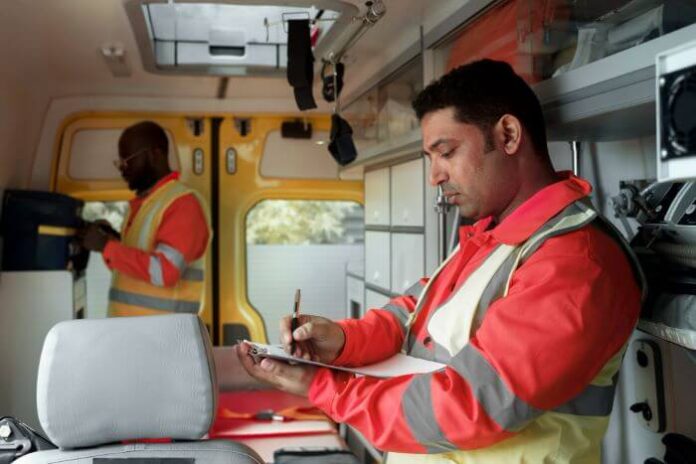Are you gearing up for your final FEMA exam and seeking clarity on critical concepts? You have come to the right place. In this post, we will be solving one of the questions that often appear in these exams: “Incident objectives that drive incident operations are established by the?”
This query might seem simple, but understanding it correctly can make a significant difference in your FEMA exam performance. So, here, we will be breaking the answer down to help you have a clear understanding of the subject.
So, keep reading to find the answer to the question, “Incident objectives that drive incident operations are established by the?”
Incident Objectives That Drive Incident Operations Are Established By the:
A. Agency Administrator
B. Planning Section Chief
C. Incident Commander or Unified Command
D. Operations Section Chief
The correct answer to the question is C. Incident Commander or Unified Command. Let’s explain why that is so. That way, even when you come across the question in your exam but with different options, you will be able to still answer it correctly.
Explanation
Incident objectives are important because they guide how an emergency or incident is managed. They tell everyone involved what needs to be done to control the situation.
The Incident Commander (IC) or Unified Command (if multiple agencies are involved) is the person in charge of the entire response effort. They are like the leader of the team. They have the responsibility to set the overall goals and objectives for the incident.
So, the IC or Unified Command decides what needs to be achieved during the incident. Then, the other sections, like Operations, Planning, and others, work together to achieve those objectives.
So, we can rightly say that the Incident Commander or Unified Command is like the captain of a ship, and they decide where the ship is going (the incident objectives). The other crew members (Planning, Operations, etc.) help steer the ship in that direction.
What’s the Role of the Other Personnel?
Now that we know that the right answer to the question, ‘Incident objectives that drive incident operations are established by the’ is the Incident Commander or the Unified Command, let’s consider the roles of the other personnel in the question.
A. Agency Administrator
The Agency Administrator is a crucial figure in emergency management too. They are responsible for overseeing their specific agency’s operations and resources.
While they play a pivotal role in resource allocation and decision-making within their organization, they typically do not set the incident objectives that drive the overall incident operations. Their focus is primarily on managing their agency’s assets and personnel.
B. Planning Section Chief
The Planning Section Chief is also a key player within the Incident Command System (ICS). This role involves gathering and analyzing information, developing plans, and providing recommendations to the Incident Commander.
The Planning Section Chief’s responsibilities include creating Incident Action Plans (IAPs) and ensuring that the incident objectives are aligned with the overall strategy. However, they do not have the authority to establish the incident objectives themselves.
D. Operations Section Chief
The Operations Section Chief is responsible for overseeing the tactical activities and resources directly involved in incident response. They execute the plans developed by the Incident Commander and work to achieve the incident objectives set by the IC or Unified Command.
While the Operations Section Chief plays a crucial role in carrying out the response efforts, they do not have the authority to establish the incident objectives independently.
Some Other Similar Questions You Might Encounter
Who drives incident operations?
Incident operations are primarily driven by the Incident Commander or Unified Command, collectively referred to as the command structure. These individuals are responsible for taking charge of the incident response, making critical decisions, and providing leadership to ensure a coordinated and effective response.
They set the overall strategy, allocate resources, and prioritize actions to achieve the desired outcomes of the incident. These personnel ensure that everyone involved is working towards a common goal and that the response efforts are well-coordinated and efficient.
Who sets incident objectives?
The responsibility for setting incident objectives, which are crucial in guiding the actions of response personnel, also rests with the Incident Commander or Unified Command. They assess the situation, consider the priorities and resources available, and determine what needs to be accomplished during the incident.
These objectives serve as the foundation for the entire incident response, helping to define specific goals and desired outcomes that all responding agencies and personnel should work collectively to achieve.
Who is responsible for developing the incident action plan?
The development of the Incident Action Plan (IAP) is the responsibility of the Planning Section within the Incident Command System (ICS). The Planning Section Chief, along with their team, takes on this critical role.
They gather and analyze information, evaluate the current incident status, and coordinate with other sections and agencies to formulate the IAP. The IAP outlines the incident’s objectives, strategies, and tactics, providing a comprehensive plan that guides all response efforts and helps ensure a coordinated and effective response.
Who typically has authority to order incident resources?
The Incident Commander or Unified Command holds the authority to do this. They make resource allocation decisions based on the incident’s evolving needs and priorities.
This authority allows them to request additional personnel, equipment, and support from various agencies and jurisdictions to effectively manage the incident.
Who reports directly to the Incident Commander?
In the Incident Command System (ICS), several key positions report directly to the Incident Commander. These include the:
- Operations Section Chief, who manages tactical activities
- The Planning Section Chief, responsible for developing the IAP
- The Logistics Section Chief, in charge of resource support
- The Finance/Administration Section Chief, if applicable, who handles financial and administrative aspects.
These individuals form the command staff and play essential roles in executing the overall incident strategy under the direct supervision and guidance of the Incident Commander, ensuring a well-coordinated and efficient response effort.







